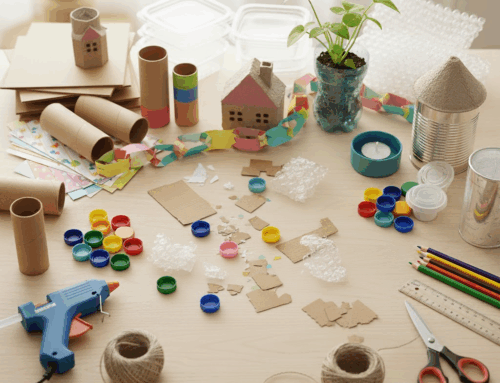Thrift stores face challenges with unusable donations – items they can’t sell due to damage, safety risks, or defects. These include stained clothing, broken electronics, and damaged furniture. Sorting and disposing of these items takes time, space, and money, which affects their ability to support charitable programs.
Here’s how thrift stores, like City Thrift, manage such donations:
- Inspection: Every item is checked for quality, safety, and resale potential.
- Sorting: Unusable items are categorized (e.g., textiles, electronics) for proper disposal.
- Recycling: Materials like fabrics and electronics are sent to recycling partners when possible.
- Disposal: Items that can’t be recycled are responsibly discarded.
How Thrift Stores Check Donations
At City Thrift, every donation undergoes a thorough inspection to ensure it meets quality standards and upholds the store’s reputation. This careful process not only helps maintain product quality but also maximizes funds that support vital community programs.
The inspection process plays a crucial role in keeping customers satisfied while enabling City Thrift to fund programs run by the City Union Mission. By ensuring only well-maintained items make it to the sales floor, the store reduces customer complaints and minimizes the hassle of returns.
Inspection Process for Incoming Items
City Thrift’s team examines each donation as it arrives, whether through drop-offs or donation drives.
Each item is inspected visually and physically. For clothing, staff check seams, zippers, buttons, and fabric for issues like stains, odors, or excessive wear. Electronics are tested for functionality when possible, while furniture is assessed for structural integrity and safety.
The team also evaluates whether donations align with customer preferences and seasonal needs. For example, a winter coat donated in the middle of summer might be stored for later, while outdated electronics or items with no resale value are flagged for recycling or proper disposal.
Cleanliness is a top priority. Items that can be cleaned or refurbished are prepared for resale, but those with permanent stains, strong odors, or hygiene concerns are typically rejected.
“Cleanliness is key to making secondhand goods attractive to buyers.”
Common Reasons for Rejecting Items
To maintain customer trust and provide a positive shopping experience, City Thrift follows strict quality control standards. Certain items commonly fail inspection and are not accepted for resale.
Clothing is declined if it has permanent stains, large tears, broken zippers, missing buttons, or lingering odors. Similarly, household items and electronics are rejected if they pose safety risks, are missing essential components, or show signs of water damage.
Safety is a top concern. Items with potential hazards, recalls, or risks to customers are immediately discarded. Additionally, market demand and storage limitations influence rejection decisions. Items that don’t meet community needs or fail to sell are set aside for alternative disposal methods.
This detailed inspection process ensures City Thrift remains a reliable source for second-hand goods while also maximizing funding for the important community work of the City Union Mission. Rejected items are sorted and disposed of responsibly after inspection.
What Happens to Items That Can’t Be Sold?
City Thrift has a thoughtful system in place for dealing with donations that don’t pass their quality checks. Instead of simply throwing these items away, they follow a structured process to ensure these goods are handled responsibly. This approach aligns with their commitment to reducing waste and supporting their mission to benefit the community and the planet.
Sorting and Organizing Unusable Items
When items are deemed unsellable, the staff carefully sorts them into categories based on material type and how they’ll be disposed of. This step is crucial for ensuring that each item is processed in the most effective way possible.
- Textiles: Damaged clothing, linens, and other fabric-based items are grouped and prepared for recycling programs.
- Electronics: Non-functional or unsafe electronic items are set aside for certified e-waste recycling.
- Furniture and Large Items: Broken furniture or bulky household goods that can’t be repaired are sorted for parts salvage or bulk disposal.
This sorting process allows City Thrift to collaborate efficiently with recycling partners and disposal services. Items are labeled and stored in designated areas until they can be processed, ensuring that each category follows a disposal route that minimizes waste.
Disposal and Recycling Methods
City Thrift employs various strategies to manage unsellable items, tailoring their approach based on the type of item, local recycling options, and available partnerships. Their efforts focus on keeping as much as possible out of landfills.
- Textile Recycling: Damaged fabrics are repurposed into products like industrial wipes, insulation materials, carpeting, and mattress padding. This process extends the life of these materials, even when they’re no longer suitable for everyday use.
- Electronic Recycling: Certified e-waste processors recover valuable metals and components while safely disposing of hazardous materials like batteries and circuit boards.
- Bulk Recycling Transfers: Unsellable items are sent in bulk to recycling organizations that specialize in material recovery and repurposing.
| Disposal Method | Pros | Cons |
|---|---|---|
| Textile Recycling | Reduces landfill waste, creates useful products, and generates revenue | Limited facilities, transportation costs, and not all fabrics accepted |
| Electronic Recycling | Safely disposes of hazardous materials, recovers metals | Requires certified processors, scheduling logistics, and potential fees |
| Landfill Disposal | Handles all item types, quick and predictable | Environmental impact, no material recovery, ongoing expense |
When recycling isn’t an option due to costs or availability, City Thrift uses licensed waste management services to dispose of items responsibly. They’re always exploring new partnerships and methods to further reduce landfill use and maximize the positive impact of every donation they receive.
Community and Environmental Benefits of Proper Handling
City Thrift‘s approach to managing unusable donations goes beyond simply reducing landfill waste. By recycling and repurposing these items, the organization not only contributes to environmental care but also strengthens its mission to uplift the community.
Supporting City Thrift‘s Mission
Thoughtful handling of donations allows City Thrift to better fund programs aimed at tackling homelessness and poverty. By efficiently managing unsellable goods, the organization reduces operational costs, ensuring that more of each donation directly aids community services. This approach builds trust with donors, encouraging them to continue supporting the cause. The combination of community-focused efforts and environmental responsibility amplifies the overall reach and effectiveness of City Thrift’s work.
Reducing Waste Through Recycling and Repurposing
City Thrift’s recycling initiatives help cut down waste across Kansas City. By diverting items from landfills, the organization showcases a commitment to preserving community resources. For example, textiles like clothing and linens are repurposed, minimizing their environmental footprint.
These efforts also inspire the community to adopt more sustainable donation habits. Seeing the impact of City Thrift’s work encourages greener choices, fostering a culture of sustainability. By managing unusable donations responsibly, City Thrift not only streamlines its operations but also enhances its positive influence on both the community and the environment.
Why Managing Unusable Donations Matters
Effectively managing unusable donations is crucial for maintaining smooth operations and making a meaningful difference in the community. By carefully inspecting, sorting, and responsibly disposing of items that can’t be sold, organizations like City Thrift can directly influence their financial health and their broader mission.
This attention to detail ensures that every aspect of operations supports community-focused initiatives. A robust quality control process helps redirect unsellable items to recycling or repurposing outlets, cutting down costs while making the most of each donation.
By keeping textiles, electronics, and other materials out of landfills, these efforts help conserve resources. This approach shows that second-hand retail can align economic goals with environmental responsibility.
For City Thrift, these practices translate into savings that can be reinvested into programs addressing homelessness and poverty. Transparent and responsible handling of donations builds trust with donors, encouraging ongoing community support. Efficient management of donations strengthens City Thrift’s ability to serve its mission while maintaining sustainable operations.
Thoughtful processing of unusable donations also promotes better donation habits, contributing to a circular economy. This creates a ripple effect where improved donation practices lead to stronger community programs and greater care for the environment.
Ultimately, how thrift stores manage unusable donations reflects their dedication to being responsible stewards of community resources. It’s the behind-the-scenes work that makes the visible impact possible – offering affordable goods while funding vital social services.
FAQs
What does City Thrift do with items they can’t sell or recycle?
At City Thrift, donations that can’t be sold, recycled, or repurposed are handled with care to reduce waste. Items that are severely damaged, infested (like those with bedbugs), or unsafe are responsibly disposed of to protect both the community and the environment.
City Thrift encourages donors to assess the condition of their items before giving. This thoughtful approach ensures donations have the greatest impact, supporting local initiatives aimed at tackling homelessness and poverty.
What does City Thrift do with donations that can’t be sold?
City Thrift has a smart way of dealing with donations that can’t be sold. Rather than tossing these items into landfills, they find ways to recycle, repurpose, or pass them along to other organizations that can make use of them.
This approach not only cuts down on waste but also ties directly into City Thrift’s mission of aiding community programs focused on issues like homelessness and poverty. By carefully managing all donations, they make sure every item contributes to making a difference in the community.
How does City Thrift handle donations that can’t be sold?
City Thrift has a smart way of handling donations that aren’t in sellable condition. Instead of tossing these items into landfills, they strive to repurpose or recycle them whenever they can. This approach not only cuts down on waste but also aligns with efforts to create a greener and cleaner environment.
By keeping unusable items out of landfills, City Thrift reduces its environmental footprint and encourages a more eco-conscious community. Their efforts help extend the life of materials, decreasing the demand for new production, which, in turn, conserves resources and reduces pollution.






